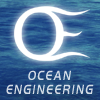
|
Jesse Dosher Senior Engineer jdosher@apl.washington.edu Phone 206-685-5435 |
Education
B.S. Electrical Engineering, University of Washington, 1999
M.S. Electrical Engineering, University of Washington, 2001
Videos
|
Commissioning a Tidal Turbine Testing System |
More Info |
31 Jul 2019
|
|||||||
|
A Laboratory and UW Department of Mechanical Engineering team is working on Lake Washington to continue testing the full-scale prototype marine hydrokinetic energy device. The turbine is mounted on the R/V Russell Davis Light gantry and then lowered between the catamaran hulls so that researchers can simulate flows past the turbine without disruptions from the vessel or other structures. |
|||||||||
|
Publications |
2000-present and while at APL-UW |
APL-UW Field-Scale Axial Flow Turbine: Design and Specifications Bassett, C., J. Burnett, K. Van Ness, H. Wood, J. Dosher, B. Cunningham, J. Noe, and T. Tran, "APL-UW Field-Scale Axial Flow Turbine: Design and Specifications," Technical Report, APL-UW TR 2402, Applied Physics Laboratory, University of Washington, Seattle, September 2024, 27 pp. |
More Info |
29 Aug 2024 |
|||||||
|
Axial flow turbines designed to generate power from underwater currents (tidal and riverine) are similar to the commonly observed wind turbines. With support from U.S. Naval Sea Systems Command, engineers at the Applied Physical Laboratory of the University of Washington (APL-UW) have designed and fabricated a one-meter diameter axial flow turbine for use in APL-UW’s marine energy research program. The system, referred to as the AFT (axial flow turbine), is designed for deployment from R/V Russell Davis Light, where the vessel, under propulsion, is used to simulate naturally occurring currents for power generation. This report summarizes the AFT’s mechanical and electrical design and is intended as a reference to support research efforts performed using the system. Encoders and six-axis load cells installed on the driveshaft and at the root of one of the rotor’s three blades, allow for characterization of the forces and torques generated during operation. The system was designed for reliability and to acquire scientific-quality data to advance studies of axial flow turbines. Thus, system components selected in the design process are not intended to maximize system efficiency and power extraction. |
|||||||||
Roboscope: A flexible and bendable surgical robot for single portal Minimally Invasive Surgery Rosen, J., and 11 others including J. Dosher, "Roboscope: A flexible and bendable surgical robot for single portal Minimally Invasive Surgery," Proc., IEEE International Conference on Robotics and Automation, 29 May - 3 June, Singapore, 2364-2370, doi:10.1109/ICRA.2017.7989274 (IEEE, 2017). |
More Info |
1 Jul 2017 |
|||||||
|
Minimally Invasive Surgery (MIS) can reduce iatrogenic injury and decrease the possibility of surgical complications. This paper presents a novel flexible and bendable endoscopic device, "Roboscope", which delivers two instruments, two miniature scanning fiber endoscopes, and a suction/irrigation port to the operation site through a single portal. Compared with existing bendable and steerable robotic surgical systems, Roboscope provides two bending degrees of freedom for its outer sheath and two insertion degrees of freedom, while simultaneously delivering two instruments and two endoscopes to the surgical site. Each bending axis and insertion freedom of Roboscope is independently controllable via an external actuation pack. Surgical tools can be changed without retracting the robot arm. This paper presents the design of the Roboscope mechanical system, electrical system, and control and software systems, design requirements and prototyping validation as well as analysis of Roboscope workspece. |
|||||||||






